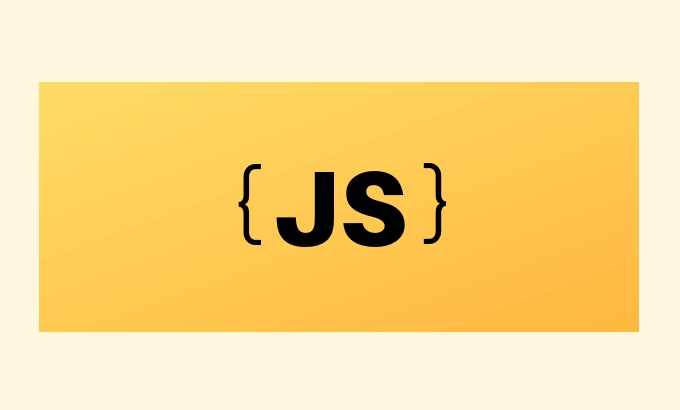How to get the value of a data attribute in JavaScript
To get the value of a data attribute in JavaScript, you can use the dataset attribute or the getAttribute() method. 1. When using the dataset attribute, the data-prefix attribute will automatically be converted to camelCase form. For example, data-user-id corresponds to dataset.userId, which is suitable for standard naming and the code is more concise; 2. Use the getAttribute() method to directly obtain the value through the complete attribute name, such as getAttribute('data-user-id'), which is suitable for dynamic attribute names or scenarios that require precise control; 3. dataset only contains attributes starting with data-, and dataset returns undefined when no attribute is set, and getAttribute() returns null; select the appropriate method according to readability and specific needs.

To get the value of a data attribute in JavaScript, you can use the dataset property or the getAttribute() method. Both are reliable, but they work slightly differently and are useful in different scenarios.

Using the dataset property
The dataset property provides a convenient way to access data attributes that are prefixed with data- . The key thing to know is that data attribute names are automatically converted to camelCase in the dataset object.
For example, if you have an HTML element like this:

<div id="myElement" data-user-id="123" data-category-name="Books"></div>
You can access the values like this:
const element = document.getElementById('myElement'); console.log(element.dataset.userId); // "123" console.log(element.dataset.categoryName); // "Books"
-
data-user-idbecomesuserId(hyphens followed by a letter becomes uppercase letters) -
data-category-namebecomescategoryName
This method is clean and intuitive, especially when working with many data attributes.

Using getAttribute()
Alternatively, you can use getAttribute() to get the exact value by the full attribute name:
const element = document.getElementById('myElement'); console.log(element.getAttribute('data-user-id')); // "123" console.log(element.getAttribute('data-category-name')); // "Books"
This method:
- Is more explicit and avoids any confusion about naming conversion
- Works consistently even with unusual or complex data attribute names
- Is useful when the attribute name is stored in a variable or built dynamically
Key points to remember
- Use
datasetfor simplicity when attribute names follow standard naming (letters, numbers, hyphens) - Use
getAttribute()when you need full control or are working with dynamic attribute names -
datasetonly includes attributes that start withdata- - If a data attribute is not set, both methods return
undefinedornull(datasetreturnsundefined,getAttribute()returnsnull)
Basically, both approaches work well—choose based on readability and your specific use case.
The above is the detailed content of How to get the value of a data attribute in JavaScript. For more information, please follow other related articles on the PHP Chinese website!

Hot AI Tools

Undress AI Tool
Undress images for free

Undresser.AI Undress
AI-powered app for creating realistic nude photos

AI Clothes Remover
Online AI tool for removing clothes from photos.

Clothoff.io
AI clothes remover

Video Face Swap
Swap faces in any video effortlessly with our completely free AI face swap tool!

Hot Article

Hot Tools

Notepad++7.3.1
Easy-to-use and free code editor

SublimeText3 Chinese version
Chinese version, very easy to use

Zend Studio 13.0.1
Powerful PHP integrated development environment

Dreamweaver CS6
Visual web development tools

SublimeText3 Mac version
God-level code editing software (SublimeText3)
 Advanced Conditional Types in TypeScript
Aug 04, 2025 am 06:32 AM
Advanced Conditional Types in TypeScript
Aug 04, 2025 am 06:32 AM
TypeScript's advanced condition types implement logical judgment between types through TextendsU?X:Y syntax. Its core capabilities are reflected in the distributed condition types, infer type inference and the construction of complex type tools. 1. The conditional type is distributed in the bare type parameters and can automatically split the joint type, such as ToArray to obtain string[]|number[]. 2. Use distribution to build filtering and extraction tools: Exclude excludes types through TextendsU?never:T, Extract extracts commonalities through TextendsU?T:Never, and NonNullable filters null/undefined. 3
 Micro Frontends Architecture: A Practical Implementation Guide
Aug 02, 2025 am 08:01 AM
Micro Frontends Architecture: A Practical Implementation Guide
Aug 02, 2025 am 08:01 AM
Microfrontendssolvescalingchallengesinlargeteamsbyenablingindependentdevelopmentanddeployment.1)Chooseanintegrationstrategy:useModuleFederationinWebpack5forruntimeloadingandtrueindependence,build-timeintegrationforsimplesetups,oriframes/webcomponents
 What are the differences between var, let, and const in JavaScript?
Aug 02, 2025 pm 01:30 PM
What are the differences between var, let, and const in JavaScript?
Aug 02, 2025 pm 01:30 PM
varisfunction-scoped,canbereassigned,hoistedwithundefined,andattachedtotheglobalwindowobject;2.letandconstareblock-scoped,withletallowingreassignmentandconstnotallowingit,thoughconstobjectscanhavemutableproperties;3.letandconstarehoistedbutnotinitial
 What is optional chaining (?.) in JS?
Aug 01, 2025 am 06:18 AM
What is optional chaining (?.) in JS?
Aug 01, 2025 am 06:18 AM
Optionalchaining(?.)inJavaScriptsafelyaccessesnestedpropertiesbyreturningundefinedifanypartofthechainisnullorundefined,preventingruntimeerrors.1.Itallowssafeaccesstodeeplynestedobjectproperties,suchasuser.profile?.settings?.theme.2.Itenablescallingme
 Generate Solved Double Chocolate Puzzles: A Guide to Data Structures and Algorithms
Aug 05, 2025 am 08:30 AM
Generate Solved Double Chocolate Puzzles: A Guide to Data Structures and Algorithms
Aug 05, 2025 am 08:30 AM
This article explores in-depth how to automatically generate solveable puzzles for the Double-Choco puzzle game. We will introduce an efficient data structure - a cell object based on a 2D grid that contains boundary information, color, and state. On this basis, we will elaborate on a recursive block recognition algorithm (similar to depth-first search) and how to integrate it into the iterative puzzle generation process to ensure that the generated puzzles meet the rules of the game and are solveable. The article will provide sample code and discuss key considerations and optimization strategies in the generation process.
 How can you remove a CSS class from a DOM element using JavaScript?
Aug 05, 2025 pm 12:51 PM
How can you remove a CSS class from a DOM element using JavaScript?
Aug 05, 2025 pm 12:51 PM
The most common and recommended method for removing CSS classes from DOM elements using JavaScript is through the remove() method of the classList property. 1. Use element.classList.remove('className') to safely delete a single or multiple classes, and no error will be reported even if the class does not exist; 2. The alternative method is to directly operate the className property and remove the class by string replacement, but it is easy to cause problems due to inaccurate regular matching or improper space processing, so it is not recommended; 3. You can first judge whether the class exists and then delete it through element.classList.contains(), but it is usually not necessary; 4.classList
 What is the class syntax in JavaScript and how does it relate to prototypes?
Aug 03, 2025 pm 04:11 PM
What is the class syntax in JavaScript and how does it relate to prototypes?
Aug 03, 2025 pm 04:11 PM
JavaScript's class syntax is syntactic sugar inherited by prototypes. 1. The class defined by class is essentially a function and methods are added to the prototype; 2. The instances look up methods through the prototype chain; 3. The static method belongs to the class itself; 4. Extends inherits through the prototype chain, and the underlying layer still uses the prototype mechanism. Class has not changed the essence of JavaScript prototype inheritance.
 Building a Design System with Storybook and React
Jul 30, 2025 am 05:05 AM
Building a Design System with Storybook and React
Jul 30, 2025 am 05:05 AM
First, use npxstorybookinit to install and configure Storybook in the React project, run npmrunstorybook to start the local development server; 2. Organize component file structure according to functions or types, and create corresponding .stories.js files to define different states in each component directory; 3. Use Storybook's Args and Controls systems to achieve dynamic attribute adjustments to facilitate testing of various interactive states; 4. Use MDX files to write rich text documents containing design specifications, accessibility instructions, etc., and support MDX loading through configuration; 5. Define the design token through theme.js and use preview.js







